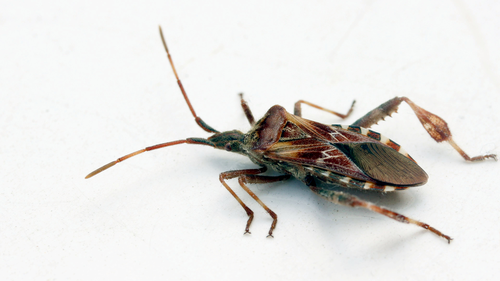
LACROIX Vincent
- Biometry and Evolutionary Biology Lab, University Lyon 1, Villeurbanne, France
- Bioinformatics
- recommender
Recommendation: 1
Reviews: 0
Recommendation: 1

Draft genome and transcriptomic sequence data of three invasive insect species
Three more reference genomes of invasive insect species
Recommended by Vincent Lacroix based on reviews by Jean-Marc Aury and Nicolas ParisotThe number and prevalence of invasive species have risen in the last decades together with international trade (Hulme 2021). As invasive species, insects have received less attention than plants. In particular, there are fewer reference genomes currently available, although genomic resources can be useful to investigate invasion dynamics and develop more effective management strategies.
Lombaeart et al. (2025) sequenced and assembled the genomes of three species: Cydalima perspectalis (the box tree moth), Leptoglossus occidentalis (the western conifer seed bug), and Tecia solanivora (the Guatemalan tuber moth), which have in common their rapid spread and severe impact on their respective host plants (boxwoods, conifers and potatoes). The authors generated PacBio HiFi reads, together with Hi-C data to obtain assemblies meeting international quality standards. They also generated short-read RNA-seq data, which they used to provide initial structural annotations of the genes. The resulting reference genomes are still in a draft state because repeats and heterozygosity are notoriously hard to handle. The most challenging genome to assemble was L. occidentalis, with an estimated size of 1.5 Gb, an estimated repeat content of 58%, and an estimated heterozygosity of 1.8%. The raw data produced can still be analysed more in depth to characterise further the repeat content and the heterozygosity of these species.
These reference genomes can readily be used for identifying genetic markers of interest for a variety of applications. In a general context where there is a growing awareness that data production is associated with a significant part of the carbon footprint of research (De Paepe et al. 2024), this dataset has high chances to be extensively reused and analysed by the community.
References
De Paepe M, Jeanneau L, Mariette J, Aumont O, Estevez-Torres A (2024) Purchases dominate the carbon footprint of research laboratories. PLOS Sustainability and Transformation, 3, e0000116. https://doi.org/10.1371/journal.pstr.0000116
Hulme, P E (2021) Unwelcome exchange: international trade as a direct and indirect driver of biological invasions worldwide. One Earth 4, 666–679. https://doi.org/10.1016/j.oneear.2021.04.015
Lombaert E, Klopp C, Blin A, Annonay G, Iampietro C, Lluch J, Sallaberry M, Valière S, Poloni R, Joron M, Deleury E (2025) Draft genome and transcriptomic sequence data of three invasive insect species. bioRxiv, ver. 2 peer-reviewed and recommended by PCI Genomics. https://doi.org/10.1101/2024.12.02.626401